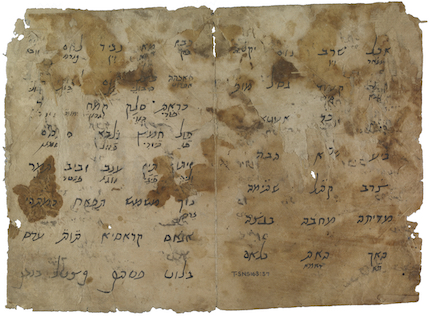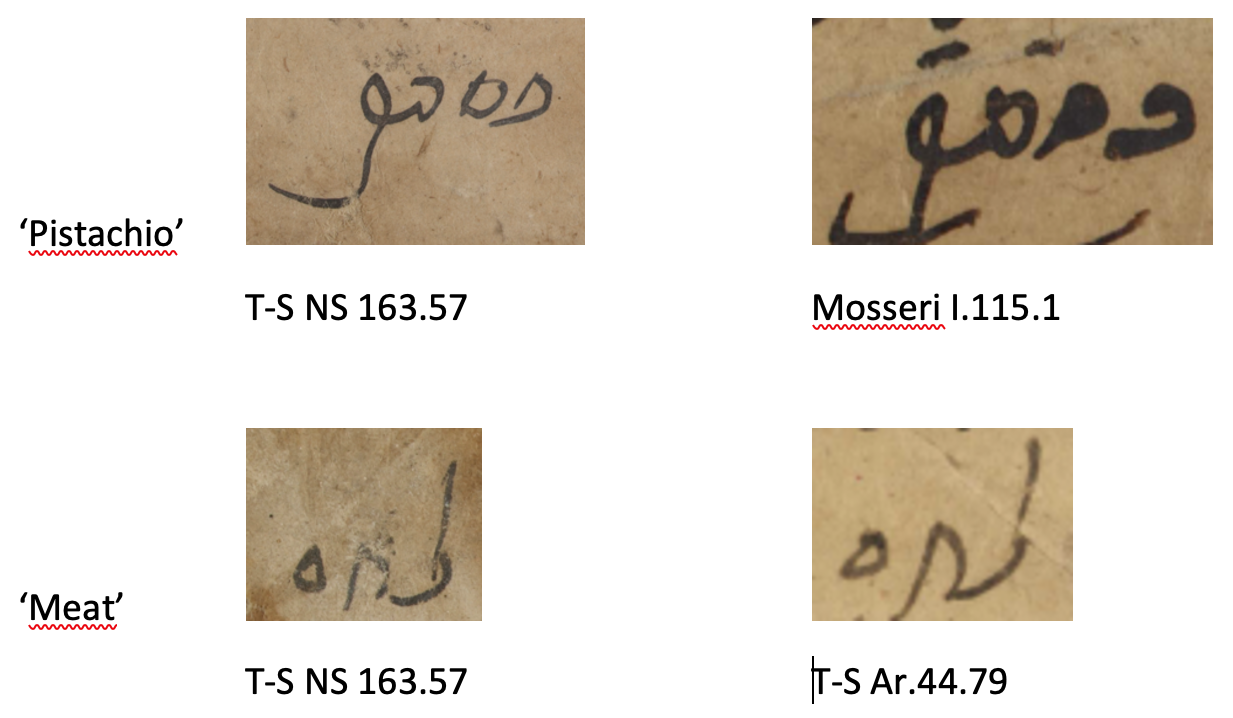Q&A Wednesday: Maimonides, hiding in plain sight, with José Martínez Delgado

Pepe, what are you working on at the moment?
I’m working on a new book about daily life in al-Andalus, and I’ve been looking for new materials to include in it. I decided to have a look at a list I made when I visited 6 years ago of lexicographical Genizah fragments, to see if any of them might be suitable for the book, and saw in my list one I had described as ‘Andalusi script’. I had a look at it and something about it seemed familiar. At the last line, I realised what I was looking at. I had seen this handwriting before. I quickly sent a message to my friend Amir Ashur. I didn’t say what I was thinking – I just asked him to look at the fragment too. He said he’d check, and then came confirmation of my suspicions. Amir had seen what I had seen. We were looking at Maimonides’ handwriting, in some sort of Romance dialect. We decided to publish the discovery together and wrote the paper in two days.
The fragment is T-S NS 163.57 – and it’s not even the first time that it has featured on this blog! I am mortified not to have recognised Maimonides’ very distinctive handwriting. We highlighted this Judaeo-Romance glossary in a ‘Throwback’ blog post back in June 2021. Can you tell us about the significance of this new identification?
The fragment is a glossary, first published by Avi Shivtiel in 2007, with words in Judaeo-Arabic in larger letters, with Judaeo-Romance translation underneath (in smaller letters and with occasional vocalisation). Maimonides has written out a draft list of terms within specific semantic categories, such as colours, flavours and aromas, actions, and food, and the translations have been added underneath.
Who wrote the translations?
Maimonides wrote them too. We asked Mordechai Akiva Friedman, and he pointed out that the word ‘carne’ (meat) is certainly in Maimonides’ hand, and there’s no reason to think he did not write the rest of it. We were able to confirm this by gathering other examples of Maimonides writing the same words that appear in this fragment, and it’s clear that it’s him.

So, is this proof that Maimonides spoke Spanish?
Well, first, we cannot be sure it’s Spanish – it is some sort of Romance dialect, but from where? Aragon? Valencia? Catalonia? We don’t know yet. My colleague Alberto Montaner is now examining the glossary to try to clarify the origin of the dialect. And second, if anything, this is an indication that Maimonides did not speak a Romance dialect. The words are simple – bread, water, meat, egg. These are basic words, and it seems like he was trying to acquire them. He wrote out his list of words and then filled them underneath as he learned the translation. Some categories of terms are not fully translated. He wasn’t able to get translations of all the action terms. We know of different Spanish visitors to Egypt during Maimonides’ time. It’s possible he was getting input from different sources, so it may not even be one Romance dialect represented. He’s also writing down what he hears, so there are some idiosyncratic transcriptions, and also some errors. He writes the pair ‘eat’ and ‘drink’, but ‘drink’ is incorrectly translated with the word ‘wine’. He didn’t know enough of the language to realise the translation error.
The glossary covers fours semantic categories: colours, flavours and aromas, actions, and food. Why was Maimonides collecting these words? What does it tell us about him?
The sequence of the words is interesting, as we are seeing him ‘at work’, writing a progression of words that make sense to him. The terms don’t follow alphabetical order – they are arranged logically by basic associations (bread, water), and opposites (white, black). The category of colours (white, black, blue, red, green, yellow, purple), ends in ‘light’ and ‘dark’ and then moves to flavours and aromas. The connection between these is presumably the senses, moving from sight to taste to smell. The list of foods moves from basic foods (bread, water) to vegetables, to edible seeds (wheat, chickpea), to seeded fruits (olive, fig), to dried fruits/nuts (acorn, pistachio), to foods from other natural products (milk, honey). The list of actions first describes the basic actions undertaken by all animals (eat, sleep), and then moves to actions, feelings and emotions that are more specific to people. As to why he was collecting the words? He was a physician, with students, so perhaps he was gathering the terms for a medical or educational reason, or perhaps he just enjoyed quizzing visiting Spaniards!
Thanks for your time, Pepe! I also enjoy quizzing visiting Spaniards.
José Martínez Delgado is Professor of Hebrew Languages at the Department of Semitic Languages in the University of Granada, and a visiting researcher at the Genizah Research Unit.

Add new comment